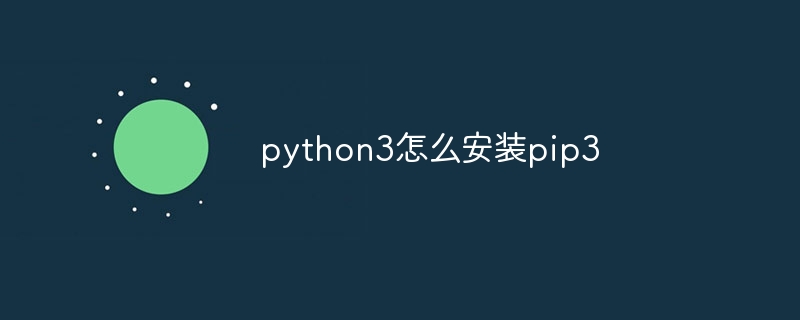Home >Backend Development >Python Tutorial >How to install pip3 in python3
Python3 installation pip3 method: 1. Normally, pip3 has been automatically installed with the installation of Python3; 2. Open the command line tool and enter the "python3 -m pip install --upgrade pip" command to download get-pip.py file, run the "python3 get-pip.py" command to install pip3.

The operating system for this tutorial: Windows 10 system, Python version 3.11.4, Dell G3 computer.
If you are using the Python 3.x version, usually, pip3 has been automatically installed with the installation of Python 3. But if you find that pip3 is not installed, you can install pip3 manually by following these steps:
First, make sure that Python 3 is installed on your system. If you haven't installed Python 3 yet, please install Python 3 first.
Open the command line tool (such as cmd or terminal).
Enter the following command to download the get-pip.py file:
curl https://bootstrap.pypa.io/get-pip.py -o get-pip.py
Or
python3 -m pip install --upgrade pip
Run the following command to install pip3:
python3 get-pip.py
After the installation is complete, you can use the following command to verify whether pip3 is successfully installed:
pip3 --version
After installing pip3, you can use pip3 to install Python 3 packages. For example, to install a package named requests, you can use the following command:
pip3 install requests
This will automatically download and install the requests package and its dependencies. If you need to uninstall a package, you can use the following command:
pip3 uninstall requests
In short, pip3 is a Python 3 package management tool, used to install, uninstall, and manage Python 3 packages. With the above steps, you can manually install pip3 and start using it to manage Python 3 packages.
The above is the detailed content of How to install pip3 in python3. For more information, please follow other related articles on the PHP Chinese website!